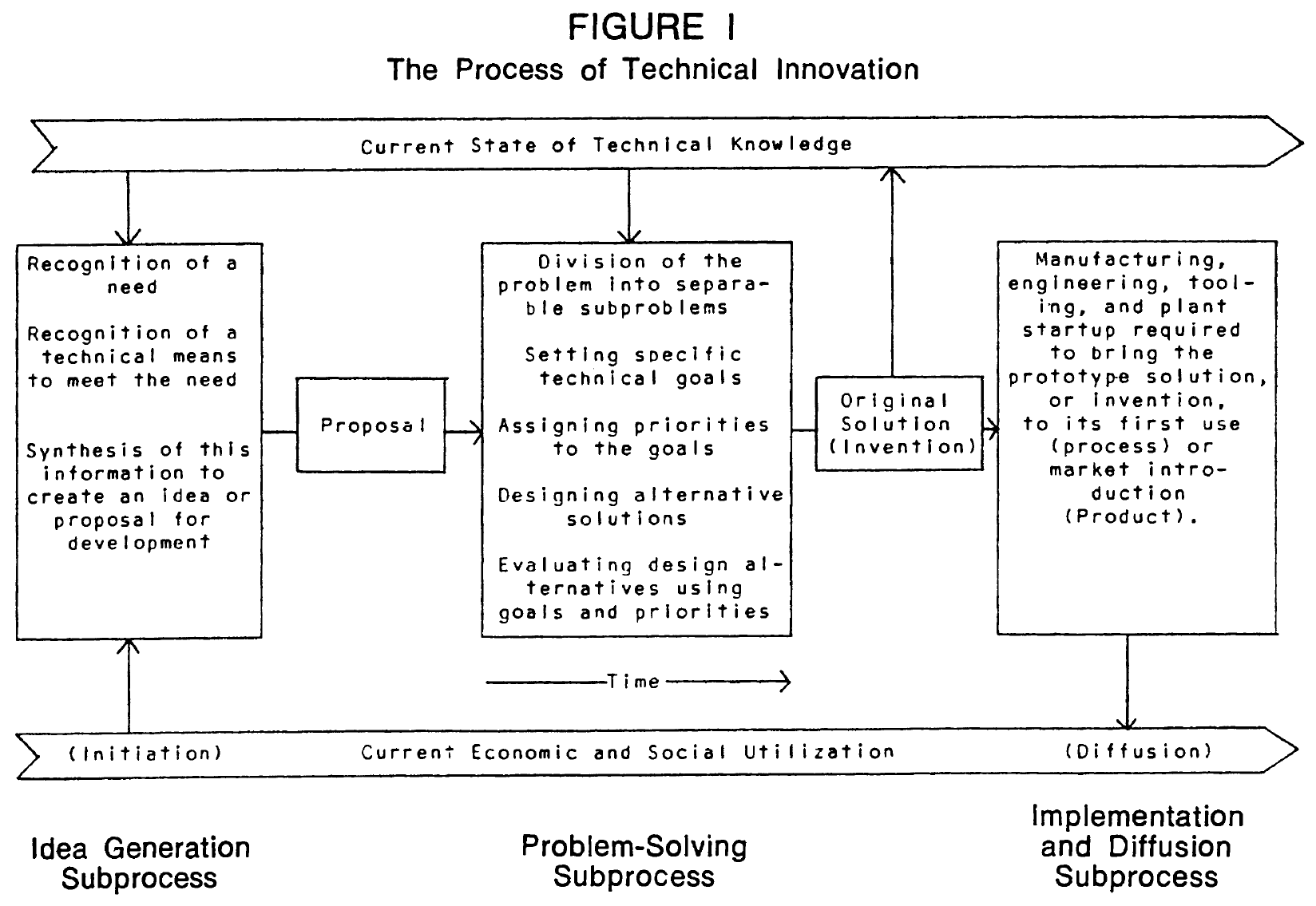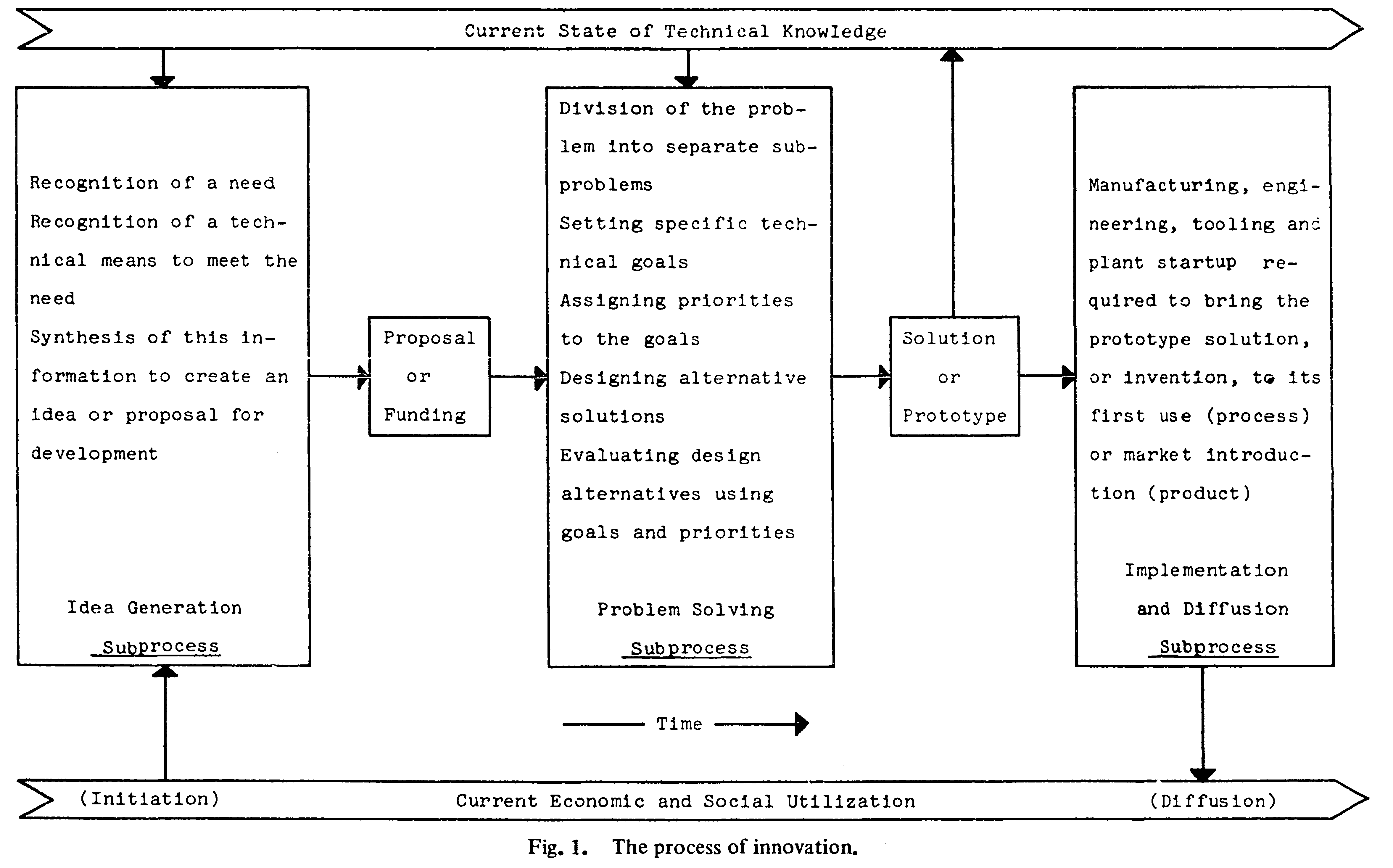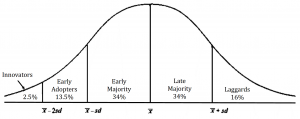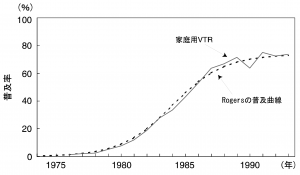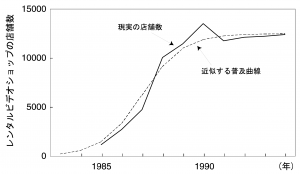Donald G. Marquis – Innovationは、新しいアイデアの思いつき、新しい機械装置のInvention(発明)、新市場の形成・発展など関連するサブプロセスのトータルプロセスである
Marquis, Donald G.(1969) “The Anatomy of Successful Innovations,” Innovation, Vol.1, No. 7 (November 1969).
“innovation is not really a single action, but a total process of related subprocesses. It is not just the conception of a new idea, nor the invention of a new device, nor the development of a new market. The process is all of these things acting in an integrated way toward a common objective― which is technological change [pp.28-37].
James M. Utterback - Inventionの後に、経済的意義をもたらす企業家的行為(entreprenurial action)が必要。Innovationは、新製品の場合であれば市場参入を可能にするInventionであり、生産プロセスの場合であれば最初の利用(first use)がなされたInventonである。
Schmookler(1966)やMarquis(1969)によれば、Inventionは、「need(あるいはwant)についての情報」と「そうしたneed(あるいはwant)を充足する技術的手段についての情報」の統合から生み出される独創的な解決(original solution)である。Inventionの後に、経済的観点から有意義なものとする企業家的行為(entreprenurial action)が必要となる。
The definition of innovation, as distinct from invention, will follow the suggestions of Schmookler [23] and Marquis [15, pp. 26-33]. According to this definition, an invention is an original solution resulting from the synthesis of information about a need or want and information about the technical means with which the need or want may be met. An invention must be followed by entreprenurial action before it has significance in economic terms. Thus, innovation will be defined to refer to an invention which has reached market introduction in the case of a new product, or first use in a production process, in the case of a process innovation. The key idea here, first use, does not preclude consideration of adopted ideas which are new in a particular market or application, nor does it provide a measure of the economic significance of an innovation. It simply requires that an idea has been carried far enough to begin to have an economic impact.
Marquis, Donald G.(1969) “A Project Team Plus PERT Equals Success. Or Does It?” Innovation, Vol.1, No.3 (July 1969).
Schmookler, Jacob (1966) Invention and Economic Growth, Harvard University Press, .

